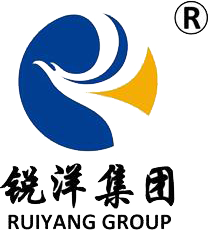
The Double-Edged Sword of Green Energy: New Challenges for Cables in Wind and Solar Farms
2025-09-18 15:57The global shift toward wind and solar power represents a monumental step in combating climate change. However, this green revolution introduces unique and demanding challenges for the cables that form the lifelines of these renewable energy systems. Unlike traditional power infrastructure, wind and solar farms operate in harsh, dynamic environments and require specialized cables to ensure reliability, efficiency, and safety.
1. Environmental Extremes
Wind farms are often located offshore or in exposed coastal areas where cables face constant moisture, saltwater corrosion, and mechanical stress from waves and tides. Solar farms, typically installed in sun-drenched deserts, subject cables to extreme UV radiation, temperature fluctuations, and abrasive dust. These conditions demand cables with enhanced durability:
Weather Resistance: Jackets must resist UV, ozone, and microbial growth.
Temperature Tolerance: Cables must operate reliably in ranges from -40°C to 90°C.
Chemical and Corrosion Resistance: Materials should withstand salt, acids, and alkalines.
2. Electrical Stresses
Solar and wind power generation involves dynamic electrical conditions:
DC Voltage Challenges: Solar arrays generate direct current (DC) at voltages up to 1500V, requiring cables with robust DC insulation systems to prevent degradation.
Partial Discharge Risks: Rapid switching in inverters and converters causes voltage spikes, accelerating insulation wear.
Harmonics and Noise: Power electronics introduce harmonics, necessitating shielded cables to prevent electromagnetic interference (EMI).
3. Mechanical Dynamics
In wind turbines, cables must endure constant movement:
Flexibility and Torsion Resistance: Tower-to-nacelle cables undergo twisting and bending millions of times over their lifespan.
Drag Chain Compatibility: Internal turbine cables need to perform in guided bending systems without failure.
4. Safety and Compliance
Renewable energy cables must meet stringent international standards:
Flame Retardancy: IEC 60332-1 for flame spread prevention.
Halogen-Free Design: IEC 60754-2 to avoid toxic gas emission during fires.
Weathering Tests: UL 4703 and TUV EN 50618 for solar and wind cable certifications.
5. Innovations Driving Solutions
To address these challenges, manufacturers develop cables with:
Cross-Linked Polyolefins (XLPO/XLPE) for thermal stability.
Halogen-Free Flame-Retardant (HFFR) Compounds for safety.
EMI Shielding with copper braids or tapes.
Armored Designs for rodent protection and mechanical strength.
The green energy transition relies on cables that can survive nature's extremes, electrical stresses, and mechanical demands. Through material science innovation and rigorous testing, the cable industry continues to support renewable growth—ensuring that the infrastructure powering our sustainable future is as resilient as it is revolutionary.
